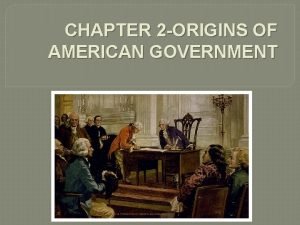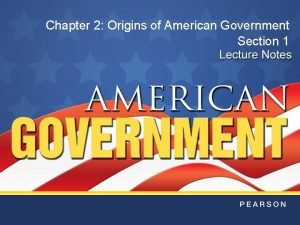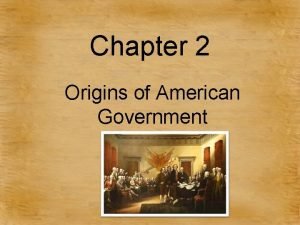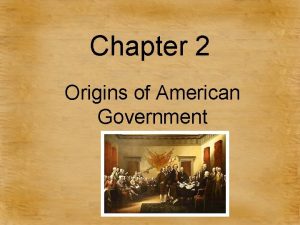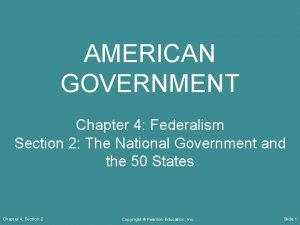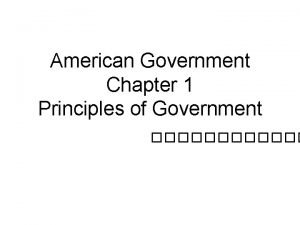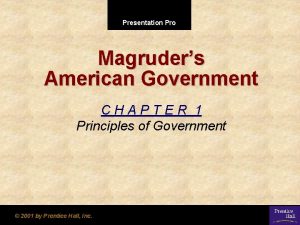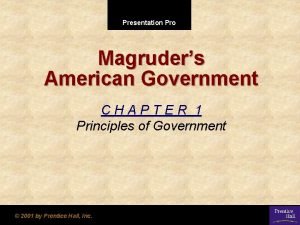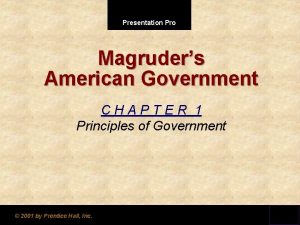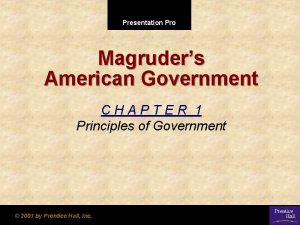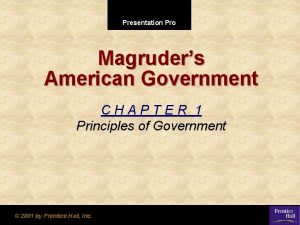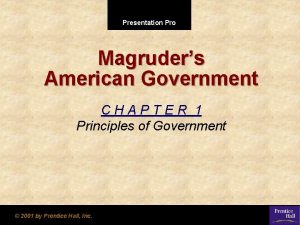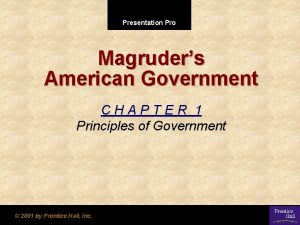Presentation Pro Magruders American Government CHAPTER 1 Principles








- Slides: 8

Presentation Pro Magruder’s American Government CHAPTER 1 Principles of Government © 2001 by Prentice Hall, Inc.

SECTION 2 Forms of Government • How can we classify governments? • How are systems of government defined in terms of who can participate? • How is power distributed within a state? • How are governments defined by the relationship between the legislative and executive branches? Go To Section: 1 2 3 Chapter 1, Section 2

Classifying Governments can be classified by three different standards: (1) Who can participate in the governing process. (2) The geographic distribution of the governmental power within the state. (3) The relationship between the legislative (lawmaking) and the executive (law-executing) branches of the government. Go To Section: 1 2 3 Chapter 1, Section 2

Classification by Who Can Participate Democracy • In a democracy, supreme political authority rests with the people. • A direct democracy exists where the will of the people is translated into law directly by the people themselves. • In an indirect democracy, a small group of persons, chosen by the people to act as their representatives, expresses the popular will. Go To Section: 1 2 3 Dictatorship • A dictatorship exists where those who rule cannot be held responsible to the will of the people. • An autocracy is a government in which a single person holds unlimited political power. • An oligarchy is a government in which the power to rule is held by a small, usually selfappointed elite. Chapter 1, Section 2

Classification by Geographic Distribution of Power Unitary Government • A unitary government has all powers held by a single, central agency. Confederate Government • A confederation is an alliance of independent states. Federal Government • A federal government is one in which the powers of government are divided between a central government and several local governments. • An authority superior to both the central and local governments makes this division of power on a geographic basis. Go To Section: 1 2 3 Chapter 1, Section 2

Classification by the Relationship Between Legislative and Executive Branches Go To Section: 1 2 3 Chapter 1, Section 2

Forms of Government Go To Section: 1 2 3 Chapter 1, Section 2

Section 2 Review 1. In a democracy, (a) independent states form an alliance. (b) supreme political authority rests with the people. (c) those who rule cannot be held responsible to the will of the people. (d) the rule by a few, select individuals regulates the will of the people. 2. The United States government has the following characteristics: (a) confederate, parliamentary, and dictatorship. (b) unitary, presidential, and democracy. (c) federal, presidential, and democracy. (d) unitary, parliamentary, and dictatorship. Want to connect to the Magruder’s link for this section? Click Here! Go To Section: 1 2 3 Chapter 1, Section 2
 Magruder's principle
Magruder's principle Chapter 2 american government
Chapter 2 american government Origins of american government vocabulary
Origins of american government vocabulary Chapter 2 origins of american government answer key
Chapter 2 origins of american government answer key Chapter 2: origins of american government worksheet answers
Chapter 2: origins of american government worksheet answers Chapter 2 lesson 1 government in colonial america
Chapter 2 lesson 1 government in colonial america Chapter 2 origins of american government
Chapter 2 origins of american government Chapter 4 federalism answer key
Chapter 4 federalism answer key Chapter 1 principles of government
Chapter 1 principles of government

